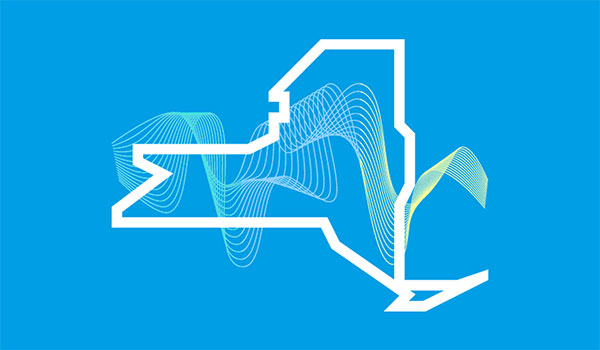The RTEM Network
A centralized location to learn about best energy management practices and plan for a decarbonized future.
What is Real Time Energy Management?
Managing energy in buildings is hard… but it can be much easier with Real Time Energy Management (RTEM).
RTEM technologies unlock building energy use data to give a better understanding of how building systems and equipment are performing. They can also compare historical performance data, provide energy-saving recommendations, and detect inefficiencies in real-time.
Between condos and co-ops, small businesses, and larger commercial buildings, there’s no one-size-fits-all solution to energy management – RTEM systems included. Explore the resources, guidelines, and best practices below to make the most of your RTEM system.
Case Studies and Best Practices
-

NYSERDA's Grid-Interactive Building Showcase
Read MoreExplore existing solutions for demand flexibility that leverage smart technology coupled with deep energy retrofits to reduce operating costs, meet climate objectives, and increase grid stability.
Read more about NYSERDA's Grid-Interactive Building Showcase
-

Utilivisor x Memorial Sloan Kettering
Learn MoreMedical center uses real-time energy management system to reduce operating costs and energy waste.
Read more about Utilivisor x Memorial Sloan Kettering
-

Sherman Terrace Co-Op
Read MoreNYC housing co-op achieves energy savings and emissions reduction with real-time energy management system and boiler controls.
Read more about Sherman Terrace Co-Op
RTEM Frequently Asked Questions
How long does a RTEM system installation take?
The duration of a RTEM system installation is unique to each project/system and should be discussed with your RTEM vendor. While the duration is site specific, they typically average between three to six months. Key factors of the installation duration include:
- Project scope
- Site access
- Access to the building’s network infrastructure and equipment integration protocols
- Coordination and communication with your qualified RTEM vendor
All projects submitted to the NYSERDA RTEM program must be installed and commissioned within six months of project approval.
What do I need to have in place for a RTEM system?
In short, all buildings have automated controls capabilities.
Facilities of any size or of any system complexity can realize the benefits of RTEM. RTEM can work for Commercial, Multifamily, or Industrial, and whether they have a multitude of distributed systems, or a single central plant. RTEM Systems may be as simple as a box that plugs into your boiler, or as comprehensive as full-blown Building Management System.
The right fit for your building depends on the specific outcomes you are looking to achieve, with whatever mix of systems are present at your site. Using RTEM to understand the nuances of how your asset performs, and identify where you can save energy, time, and money starts with you.
How often does a RTEM system need to be updated?
When it comes to software, the cloud connectivity of an RTEM system allows for seamless updates, and the expansion of analytic functionality over time. Your RTEM system will never need to be manually updated to a newer version, and can be expanded at whatever pace best fits your long-term capital plan.
What is the average useful life of a RTEM system?
The benefit of RTEM's cloud connectivity means that the monitoring and analytic capabilities built into the platform will never degrade over time. The effective lifetime of an RTEM system is more reliant on the functionality and accuracy of the underlying controls hardware in your space, or on whether your RTEM vendor provides a System-As-A-Service offering.
On balance, the average effective useful life of an RTEM system is approximately 15 years. (NYS TRM EMS Lifetime Reference)
How much can I save with a RTEM system?
Some vendors may promise sky-high energy savings, and some isolated test cases have resulted in energy savings as high as 20-30%. However, the savings you will see at your building will depend on a range of factors, such as existing site conditions, building type and use, and occupancy rates.
Class A buildings, with experienced operators and engineers who already run a tight ship, may realize less direct energy savings. However, they can expect to realize a significant reduction in staff time spent identifying and resolving issues. On the other hand, buildings without on-site staff around the clock, energy savings from installing an RTEM system may reach as high as 20%.
Overall, the RTEM program has found a portfolio-wide average of 7.2% combined energy savings across all evaluated RTEM project sites. If you have questions about the expected energy savings for your building, reach out to the RTEM Team (link to contact us/information request), who can provide additional information about what we've seen across a range of building types.
RTEM Buying Guide
The RTEM Buying Guide provides in-depth information on how RTEM systems work, their benefits, and how to determine the appropriate systems and services for your building.
- What is RTEM [PDF]
- High level explanations of a Real Time Energy Management system's components and solutions.
- Top RTEM Benefits [PDF]
- High level explanations of a Real Time Energy Management system's components and solutions.
- RTEM-Related Systems [PDF]
- Reference sheet of the relevant building systems and cloud platforms for Real Time Energy Management Technology.
- A Primer for Building Automation [PDF]
- Synopsis of the different layers in a Building Automation System (BAS), and how they are used to monitor and control equipment, ensuring comfort while optimizing energy use.
- BAS vs. RTEM [PDF]
- Explanation of the relationship between a BAS and RTEM technology, and how the two are integrated into a building.
- RTEM and On-Site Generation [PDF]
- Document that describes how RTEM may work with different types of on-site generation technologies (solar, combined heat and power, etc).
- RTEM and Demand Management [PDF]
- Synopsis of how RTEM can support Demand Response amongst the different types of Demand Management Strategies.
- RTEM RFP Guide [PDF]
- Guidance document describing the key elements and considerations of procuring an RTEM system that is right for your building.
- RTEM and Cybersecurity [PDF]
- Overview of the cybersecurity measures that should be considered when installing an RTEM system.
- RTEM and Fault Detection Diagnostics [PDF]
- Guide explaining the different faults that RTEM technology could detect and analyze.
- Start-Up Optimization and Equipment Capacity Control [PDF]
- Explanation of how RTEM can reduce energy consumption in buildings by optimizing start-up, occupancy-based control, and capacity control strategies.
Project Dashboard
The RTEM project dashboard demonstrates the growth of RTEM adoption since the beginning of the RTEM program and the positive impact of the program in the commercial, industrial, and multifamily sectors.

Community Partners









